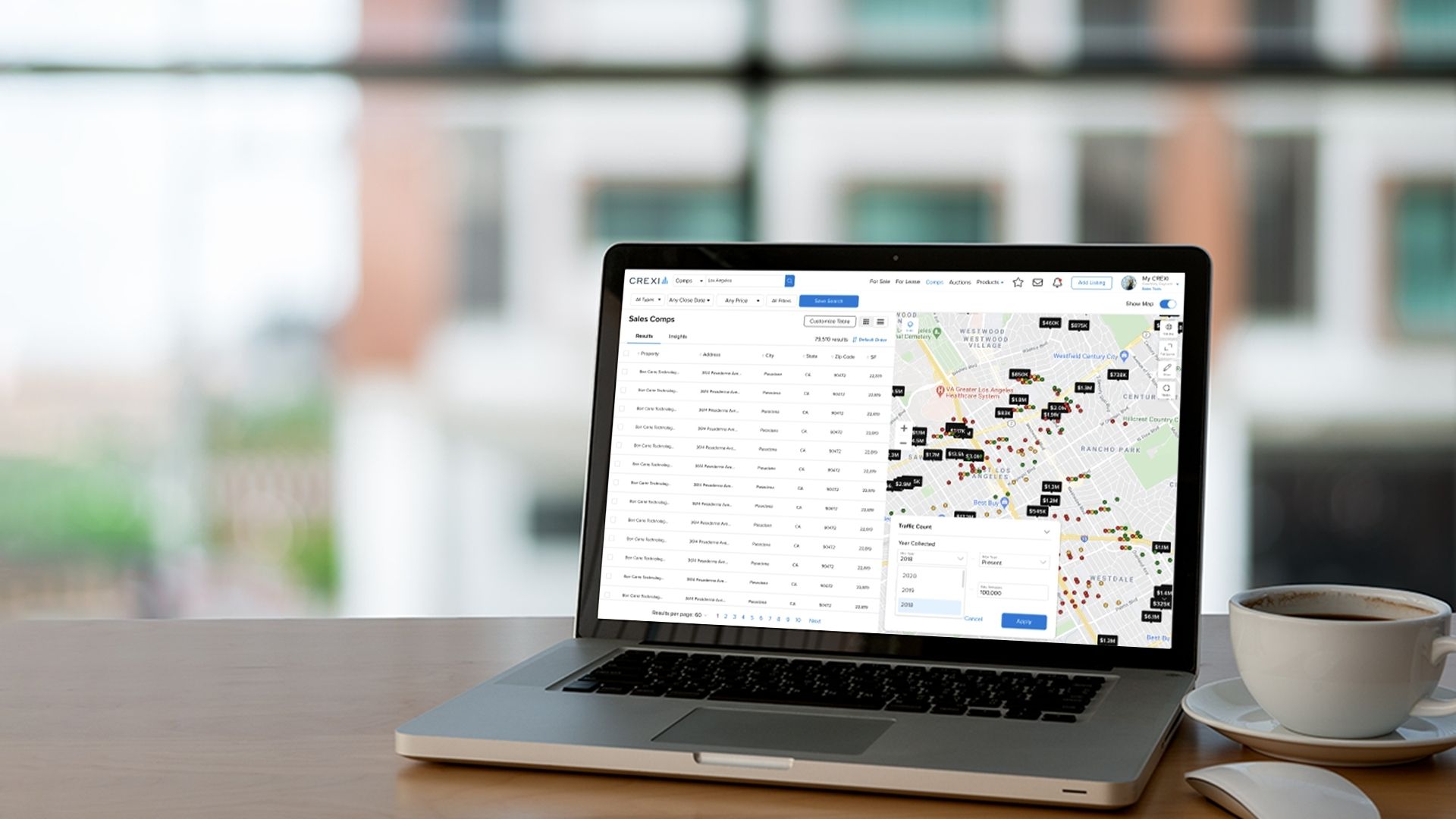| | | | | | | Presented By Crexi | | | | Axios Markets | | By Emily Peck and Matt Phillips · May 11, 2022 | | 👋 Good inflation day to you. The latest print of the Consumer Price Index, arguably the single most important number to the markets right now, is due in roughly an hour. - We're expecting the broad measure to slow from the 8.5% annual rise in March to 8.1% in April. But if the number shows inflation is still sizzling, the markets could get interesting.
Today's Markets, edited by Kate Marino, is 1,175 words, 4.5 minutes. | | | | | | 1 big thing: Looking for cracks in corporate credit |  Data: ICE BofA U.S. High Yield Index via FRED; Chart: Axios Visuals Corporate bonds have had a tough year. The rout has been difficult to stomach: high yield bond funds, for example, have returned a negative 10% since the new year, while investment-grade funds are down 13%, Axios' Kate Marino writes. Why it matters: Swift losses can make it feel like markets are on shaky ground — especially given the risks built into the Federal Reserve's monetary tightening mission. But underneath the hood, there are signs that corporate yields are rising in a pretty orderly fashion. State of play: For one thing, the lowest-quality, most risky corporate bonds haven't sold off disproportionately compared to the safer ones. (As bond prices go down, yields go up.) - The chart above shows the gap, over time, between average yields on CCC-rated bonds (the most risky) and higher-rated BBs. During the last two periods of market indigestion from Fed tightening — 2016 and 2018 — the gap between the two was much wider, often at double digits compared to around 6 percentage points now.
- Same goes for periods of economic stress like the onset of the pandemic in early 2020, and the financial crisis in 2007.
"That points to the fact that credit really hasn't cracked," Matt Nest, global head of fixed income at State Street Global Advisors, tells Axios. "The sell-off has been relatively orderly to date, which is a sign of health." - Still, he acknowledged that "we have to be looking forward and say, 'Is it coming but just hasn't happened yet?'"
Meanwhile, although yields have zoomed up, on an absolute basis they're still short of various high points over the past few decades. What to watch: That means there's undoubtedly more room for bond prices to decline further — and for the spread between CCC and BB bonds to expand. - This is one thing credit investors will be paying close attention to in the coming months as the Fed starts shrinking its balance sheet, says Peter van Dooijeweert, managing director of multi-asset solutions at Man Group's Man Solutions.
- "It's always been bad when you take the liquidity out. And the size of the balance sheet is enormous," he says. (The Fed's balance sheet more than doubled, to $8.9 trillion, since the beginning of the pandemic.)
The bottom line: The recent rise in yields is the natural result of a move toward tighter money. Broadly speaking, it's what Fed officials were aiming for. - The next test for credit markets will come if cooling economic growth starts to impact corporate earnings. The most vulnerable, highly levered companies — the CCC rated — may be the first to tip into financial distress. And then risky bond yields could really climb.
|     | | | | | | 2. Catch up quick | | ⚖️ Lisa Cook confirmed as first Black woman on Federal Reserve Board. (Axios) 📉 TerraUSD Stablecoin plunges further, wiping out billions. (Bloomberg) ⬆️ Natural gas prices in Europe rise as Ukraine blocks Russian flows. (CNBC) |     | | | | | | 3. 🪵 Timber! |  Data: CME; Chart: Axios Visuals Lumber prices are falling again, thanks to a big rejigger on both sides of the supply-and-demand equation, Emily writes. Why it matters: The price of lumber has come to symbolize our wild ride with inflation and supply chain problems over the past year or so. What's happening: The industry adjusted to the post-pandemic economy — just as rising mortgage rates are slightly easing demand for new housing. - On the supply side: The lumber industry "figured it out," Stinson Dean, CEO of Deacon Lumber in Kansas City, Mo., tells Axios.
- They increased staffing, he said, and "trucking is loosening up, rail — which has been terrible all year — is just starting to ease, and production is increasing in the U.S. South every quarter."
- On the demand side: 54% of home builders said higher mortgage rates are impacting their business, in a survey published by John Burns Real Estate Consulting this week.
- Some said buyers are rushing to lock in rates before they go higher; however, others pointed to declining foot traffic to new homes. So far, higher rates haven't led to more contracts getting canceled — but that's a fear.
What's next: The latest inflation numbers are due out later this morning. |     | | | | | | A message from Crexi | | Better understand your CRE market | | |  | | | | Every CRE market is unique. Intelligence provides the data and analytics real estate professionals need to understand markets quickly and with confidence. The benefits: Access over 13 million sales comps, insights, map overlays, search tools and much more. Explore Intelligence. | | | | | | 4. ⚰️ R.I.P. refinancing boom |  Data: Federal Reserve Bank of New York; Chart: Axios Visuals The recent surge in mortgage rates has snuffed out last year's massive refinancing boom, Matt writes. Why it matters: It shows the Fed's effort to lift interest rates — which began as a verbal campaign last fall and proceeded to actual rate hikes this year — is already starting to bite. Driving the news: The New York Fed's quarterly report on consumer debt and credit showed a sharp drop in mortgage refinancing activity. Originations of refi loans fell 15%, to $424 billion, in the first quarter. - Refi loan originations are down 40% from the first quarter of 2021.
- The boom peaked in Q2 of last year when conventional 30-year fixed mortgage rates hovered around 3%. As rates have risen, they've left fewer people with an incentive to refinance. (Today they're about 5.25%.)
The bottom line: The Fed is tapping the brakes and the slowdown is coming. |     | | |  | | | | If you like this newsletter, your friends may, too! Refer your friends and get free Axios swag when they sign up. | | | | | | | | 5. Adventures with merger-arb math |  Note: The Snap-adjusted probability assumes that Twitter would be trading at the Snap share price, absent Musk's takeover deal. The unadjusted probability assumes it would be trading at $39.31. Data: YCharts; Axios calculations. Chart: Axios Visuals Does the market think that Elon Musk's bid for Twitter is likely to fail? - A Reuters story on Tuesday suggested the probability of failure was about 50% after Twitter shares fell to $46.75. That price is roughly halfway between Elon Musk's $54.20 takeover price, and the $39.31 at which Twitter shares were trading before Musk revealed he had bought a substantial stake in the company, Axios' Felix Salmon writes.
Why it matters: There is undoubtedly worry in the market that this deal might not go through. But professional merger arbitrageurs say the market-implied probability of a deal is closer to 65% than 50%. And other calculations put the probability higher still. How it works: The big unanswerable question is where Twitter shares are likely to end up trading if Musk, for whatever reason, drops his bid and walks away. The lower the answer, the higher the market-implied probability that the deal is still going to go through. Reality check: Most merger arbs reckon that Twitter shares would fall to about $34 if the deal fails, according to Chris Pultz, a portfolio manager at Kellner Capital who specializes in the strategy. - Plug that number into the formula that's commonly used in merger arb, and you come up with a probability of about 65% that the deal will happen.
Other numbers can be used. The Reuters team is using a downside price of $39.31. However, Axios prefers to use a downside price of wherever Snap, another social media company, shares happen to be trading. After all, the Twitter and Snap share prices moved largely in lockstep until the Musk drama started (see the chart below). By the numbers: If you reckon that Twitter shares would fall to $22.89 absent the Musk bid — which is the level Snap shares are currently trading — then the market-implied probability of a successful bid is reasonably high, at 76%. The bottom line: There's decent money to be made buying Twitter at current levels, and holding out for a $54.20 check when the deal closes. But where there's reward, there's always risk. Go deeper. |     | | | | | | Bonus chart: The divergence |  Data: YCharts; Chart: Axios Visuals |     | | | | | | A message from Crexi | | Inform better CRE decisions | | |  | | | | Crexi's CRE data hub, Intelligence, offers real estate professionals access to over 13 million sales comps and key market data. Why it's important: In an ever-changing CRE environment, it's essential to have as much market data as possible. Learn more about Intelligence. | | |  | It's called Smart Brevity®. Over 200 orgs use it — in a tool called Axios HQ — to drive productivity with clearer workplace communications. | | | | | | Axios thanks our partners for supporting our newsletters. If you're interested in advertising, learn more here.
Sponsorship has no influence on editorial content. Axios, 3100 Clarendon Blvd, Suite 1300, Arlington VA 22201 | | | You received this email because you signed up for newsletters from Axios.
Change your preferences or unsubscribe here. | | | Was this email forwarded to you?
Sign up now to get Axios in your inbox. | | | | Follow Axios on social media:    | | | | | |












No comments:
Post a Comment